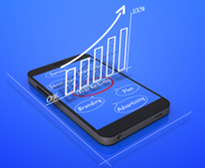Extreme Mobile Targeting Through iBeacon
By John Houghton on January 29, 2014
One of the biggest problems companies face in advertising is that the majority of advertising spend is wasted, and this drives up the cost a company has to charge for goods and services. Enter iOS (iPhone/iPad) apps and iBeacon. One of the biggest promises in mobile advertising is the ability to put together customer profiles, not only based on online activity, but also physical activity. What if the supermarket knew that a customer had been to the beach on a hot day? Why not suggest a six pack of cold beer and a spray can of sunburn reliever?
Enter the iBeacon. iBeacons work via 2.4 GHz Bluetooth 4.0, which can be powered by small batteries. The advantage of using Bluetooth is that it consumes little energy, thereby preserving battery life, whereas GPS uses much more energy and can drain a phone’s battery quickly. The iBeacon’s range is adjustable and can vary from a few feet to over 100 feet (depending on conditions).
iBeacons can be combined with sensors and other data to understand context. After all, there is a time and a place for everything, and if marketers can find the right time and place to pitch their product, they will be way ahead of the game. Of course, the first industry I think will benefit the most from this technology is retail.
Distance to the user can also be estimated by calculating the signal strength (RSSI – Received Signal Strength Indication), thereby revealing the proximity of the user to the beacon. What if you don’t have a sensor in place? Another iPhone will do, as long as it’s running an app with this functionality and the device is an iPhone 4S, iPhone 5, or the latest iPad or iPad mini.
Can Android support such near field communication? Android 4.3 API 18 (Jelly Bean – released 7/24/13) supports it, although, according to Google as of the date of this article, only about 10% of the Android market is running this operating system or better.
The technology has been available for a while, and now it has been standardized and incorporated into phones, allowing marketers to reap the benefits. If this turns out to be a successful technology, just like anything else that’s disruptive, the first to figure it out and harness it will be the one that gets ahead in the marketplace, while those that are left behind will risk becoming irrelevant.
Posted in App Development, Enterprise Mobile Apps, iOS Apps, iPad Apps, iPhone Apps
Comments
Comments
Leave a Comment







